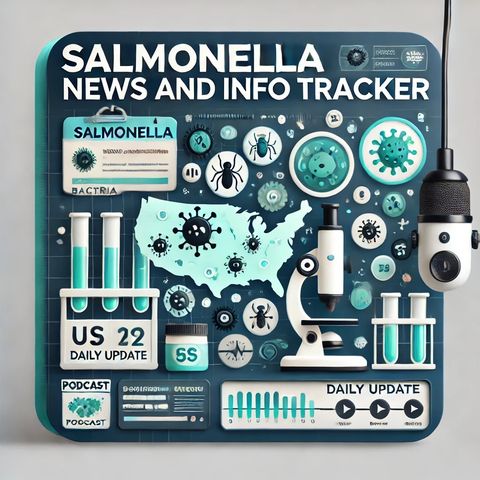Early Detection of Salmonella in U.S. Food Manufacturing: Advancing Technologies and Regulatory Safeguards

Descarga y escucha en cualquier lugar
Descarga tus episodios favoritos y disfrútalos, ¡dondequiera que estés! Regístrate o inicia sesión ahora para acceder a la escucha sin conexión.
Early Detection of Salmonella in U.S. Food Manufacturing: Advancing Technologies and Regulatory Safeguards
Esta transcripción es generada automáticamente. Ten en cuenta que no se garantiza una precisión absoluta.
Descripción
Salmonella, a type of bacteria commonly found in the intestines of animals and humans, is a leading cause of foodborne illness. Symptoms of salmonellosis, the infection caused by Salmonella, can...
mostra másRecent technological advancements have shown promise in enhancing the early detection of Salmonella in the food production process. Traditional methods of detecting this pathogen typically involve time-consuming culturing techniques that can take days to yield results. While effective, the delay in obtaining these results can allow contaminated food products to reach consumers, potentially causing widespread illness.
Modern approaches have focused on rapid testing techniques that significantly reduce detection time. Polymerase Chain Reaction (PCR) assays, for instance, can detect Salmonella DNA in food samples within hours. This molecular method amplifies traces of bacterial DNA to detectable levels, providing quicker and more reliable results compared to traditional culturing. Additionally, advancements in biosensor technologies and immunoassays have opened new avenues for on-site testing, allowing food manufacturers to conduct real-time monitoring of contamination risks.
Efforts to improve detection methods have also been supported by data analytics and machine learning. By analyzing patterns in contamination data, predictive models can identify potential outbreak sources and at-risk food products even before contamination occurs. These digital tools provide food safety authorities and manufacturers with crucial insights, enabling preemptive actions to prevent contamination.
Despite the progress in detection technologies, there are still challenges to overcome. The complexity of food matrices can sometimes interfere with the accuracy of rapid tests, necessitating further refinement and validation of these methods. Moreover, integrating new technologies into existing food safety protocols requires investment and training, which can be a barrier for smaller food production enterprises.
Government regulations and guidelines play a pivotal role in ensuring food safety. The United States Food and Drug Administration (FDA) and the Department of Agriculture (USDA) have set stringent standards and requirements for Salmonella detection in food products. These regulations mandate rigorous testing protocols and encourage the adoption of innovative technologies to safeguard public health.
Food manufacturers also bear significant responsibility for maintaining stringent hygiene standards throughout the production process. This includes proper sanitation of equipment, regular testing of raw materials, and effective employee training programs on contamination prevention.
In conclusion, while early detection of Salmonella in food being manufactured in the United States poses challenges, advancements in rapid testing techniques, data analytics, and regulatory support offer promising solutions. Continued investment in research and technology, alongside robust regulatory frameworks and industry diligence, can significantly reduce the incidence of salmonellosis, ensuring safer food for all consumers.
Información
| Autor | QP-4 |
| Organización | William Corbin |
| Página web | - |
| Etiquetas |
Copyright 2024 - Spreaker Inc. an iHeartMedia Company
